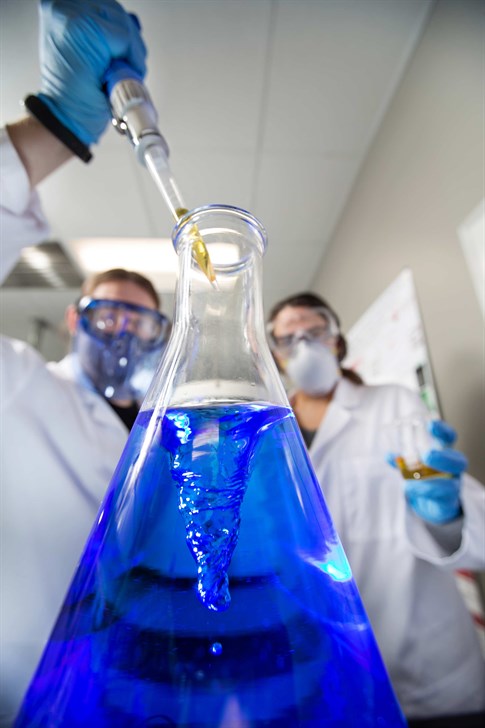
Researchers from the Department of Materials Science and Engineering at Texas A&M University are spearheading the development of an interdisciplinary soft matter research user facility. The facility will help users conduct research to improve multifunctional polymer-based materials that are used in many applications, including energy, health care and transportation, among others, and will benefit the entire Texas A&M research community.
In addition to the promotion of collaborative efforts in research, the facility is also significant in that it will be the only user facility in Texas specifically dedicated to the characterization of multifunctional soft materials.
The project includes 29 faculty members across multiple colleges and centers, including the colleges of engineering, science, and agriculture and life sciences at Texas A&M, in addition to the Texas A&M Health Science Center, representing all entities across the university actively involved in soft materials-related research. The soft matter facility is funded through the Research Development Fund for about $1.7 million, and will be located in the WD Van Gonten Laboratory Building, occupying 3,100 square feet of lab space. It is intended as an avenue to showcase current research in the field of soft materials-related research and encourage other researchers to join and support this interdisciplinary effort.
“We want this facility to become an interdisciplinary research center,” said Dr. Svetlana Sukhishvili, professor of materials science and engineering and a member of the facility’s executive committee. “The faculty will facilitate targeted faculty hires in this discipline in many colleges. It will be a premiere location to show our students and visitors the exciting discoveries we are making and hopefully encourage them to join our efforts.”
 Facilities in use at Texas A&M currently favor researchers working with “hard” materials, so the soft matter facility will focus on integrating state-of-the-art instruments on campus and acquiring new equipment to address the needs for faculty working on soft matter. The facility will have specialized instrumentation suites based on soft-matter centered research areas that include mechanics, molecular characterization, nanostructure characterization, processing, and thin film and interfacial analysis.
Facilities in use at Texas A&M currently favor researchers working with “hard” materials, so the soft matter facility will focus on integrating state-of-the-art instruments on campus and acquiring new equipment to address the needs for faculty working on soft matter. The facility will have specialized instrumentation suites based on soft-matter centered research areas that include mechanics, molecular characterization, nanostructure characterization, processing, and thin film and interfacial analysis.
“The multidisciplinary character of the soft matter research at Texas A&M is apparent from the diversity of departments and colleges we have involved in this project,” Sukhishvili said. “This facility will fill a significant gap on campus in coordinated research activities related to soft matter and foster the interaction between Texas A&M scientists in this field.”
Sukhishvili and the members of the executive committee are hopeful that collaborative efforts in this facility will enable new discoveries in health care, soft robotics, biomanufacturing and environmental protection by acting as a nucleus of activity for collaborative research efforts not only at Texas A&M, but ideally across the state and nation.
The facility will also have a significant educational impact on enhancing the current materials science and engineering curriculum by establishing a Master of Science degree program in polymer science and engineering, which, according to Sukhishvili, is a growing employment sector for statewide industries. Texas A&M currently supports the materials science industry with many specialized soft materials-related labs across the Texas A&M campus, but the facility will provide new coordinated support and benefit multiple departments.
“The establishment of the soft matter facility will bring many polymer faculty together on campus to collaborate and share ideas, as well as enhance our visibility in polymer research,” said Dr. Ibrahim Karaman, head of the of materials science and engineering department. “I expect this facility to serve as the breeding ground for many revolutionary ideas.”
The interdisciplinary soft matter facility’s multidisciplinary executive committee includes Dr. Yossef Elabd, associate department head and professor with the Department of Chemical Engineering; Dr. Allison Rice-Ficht, senior associate vice president for research at the Texas A&M Health Science Center; Dr. Duncan Maitland, professor with the Department of Biomedical Engineering; Dr. Karen Wooley, distinguished professor with the Department of Chemistry; and Sukhishvili. The facility will be directed by Sukhishvili, in conjunction with the leadership of the executive committee.